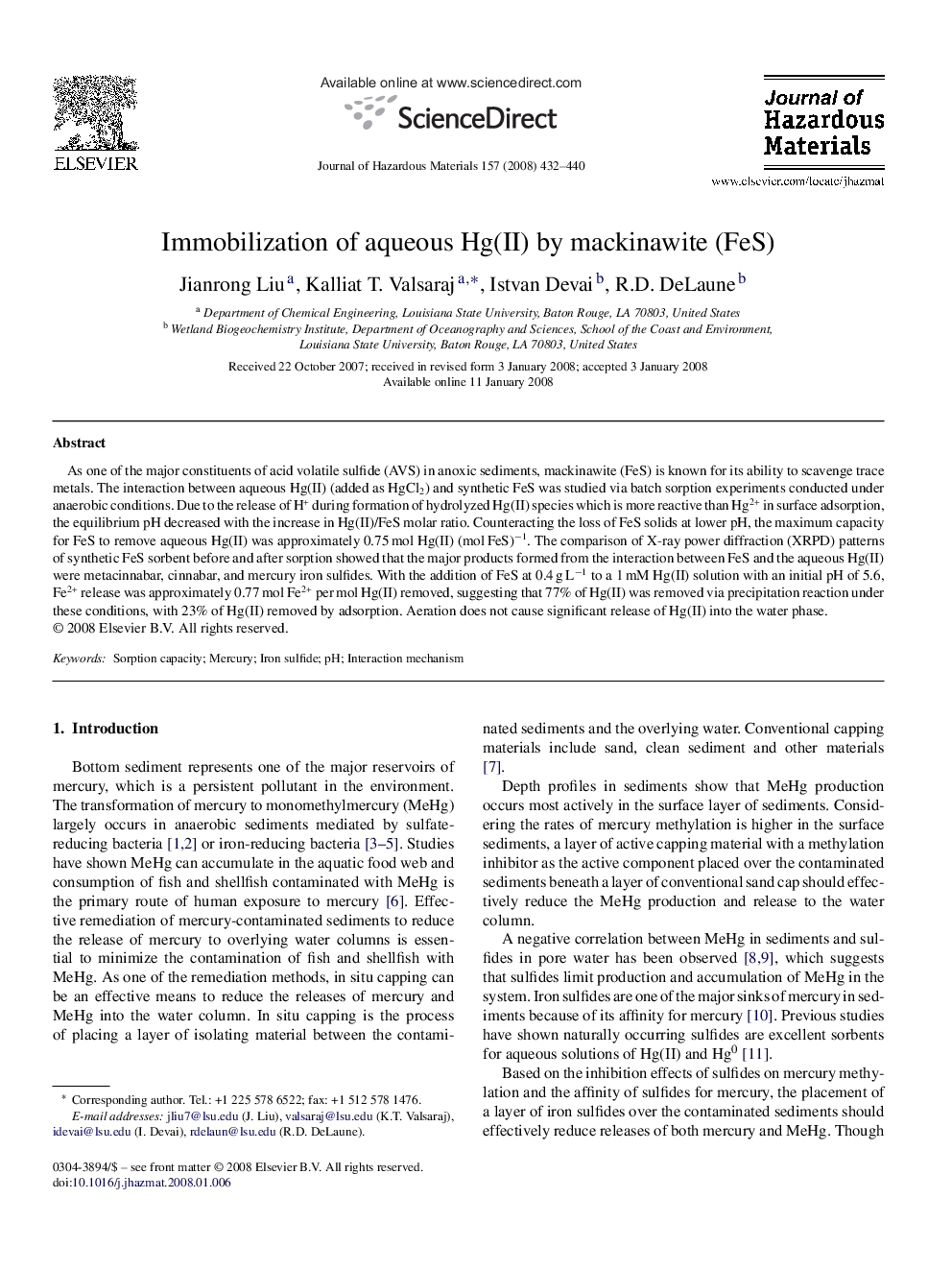| Article ID | Journal | Published Year | Pages | File Type |
|---|---|---|---|---|
| 582899 | Journal of Hazardous Materials | 2008 | 9 Pages |
Abstract
As one of the major constituents of acid volatile sulfide (AVS) in anoxic sediments, mackinawite (FeS) is known for its ability to scavenge trace metals. The interaction between aqueous Hg(II) (added as HgCl2) and synthetic FeS was studied via batch sorption experiments conducted under anaerobic conditions. Due to the release of H+ during formation of hydrolyzed Hg(II) species which is more reactive than Hg2+ in surface adsorption, the equilibrium pH decreased with the increase in Hg(II)/FeS molar ratio. Counteracting the loss of FeS solids at lower pH, the maximum capacity for FeS to remove aqueous Hg(II) was approximately 0.75 mol Hg(II) (mol FeS)â1. The comparison of X-ray power diffraction (XRPD) patterns of synthetic FeS sorbent before and after sorption showed that the major products formed from the interaction between FeS and the aqueous Hg(II) were metacinnabar, cinnabar, and mercury iron sulfides. With the addition of FeS at 0.4 g Lâ1 to a 1 mM Hg(II) solution with an initial pH of 5.6, Fe2+ release was approximately 0.77 mol Fe2+ per mol Hg(II) removed, suggesting that 77% of Hg(II) was removed via precipitation reaction under these conditions, with 23% of Hg(II) removed by adsorption. Aeration does not cause significant release of Hg(II) into the water phase.
Related Topics
Physical Sciences and Engineering
Chemical Engineering
Chemical Health and Safety
Authors
Jianrong Liu, Kalliat T. Valsaraj, Istvan Devai, R.D. DeLaune,
